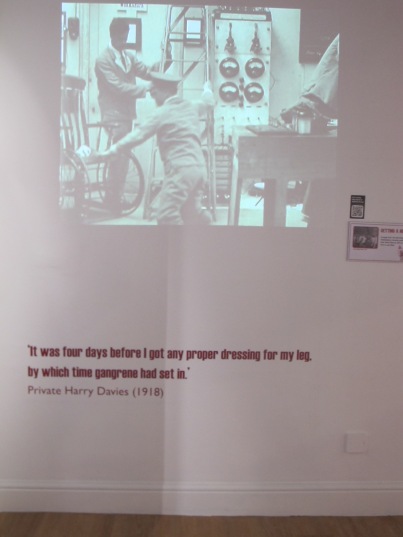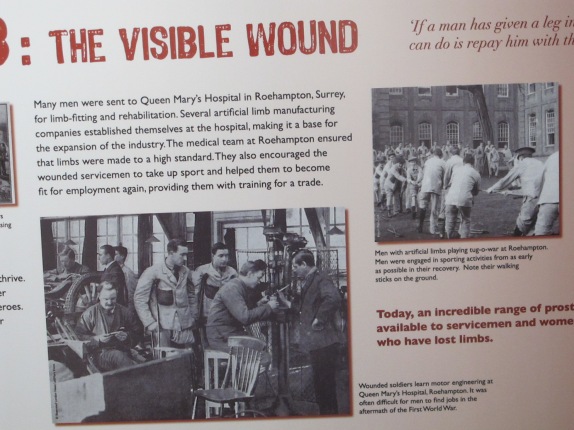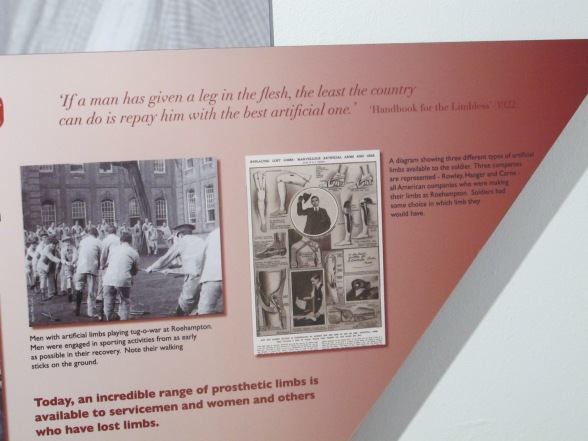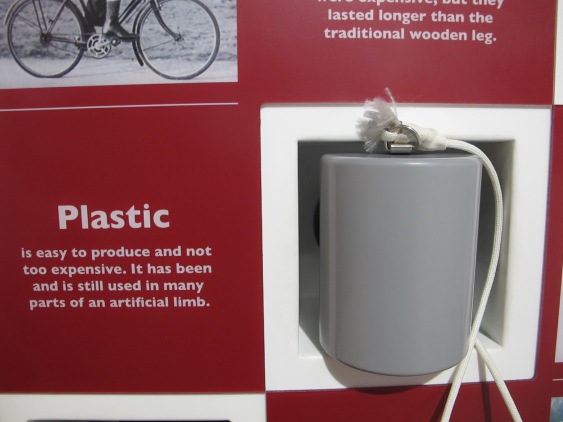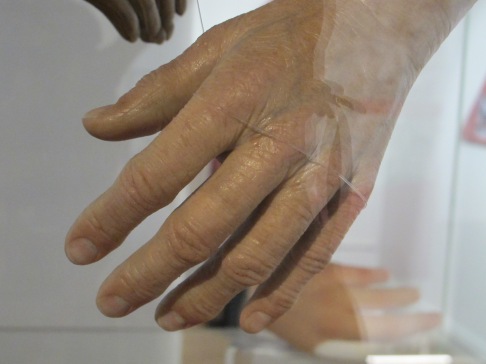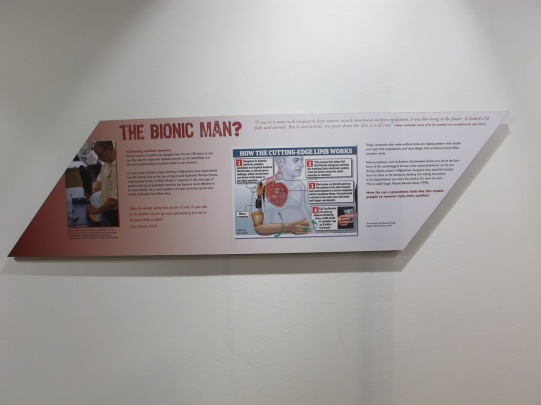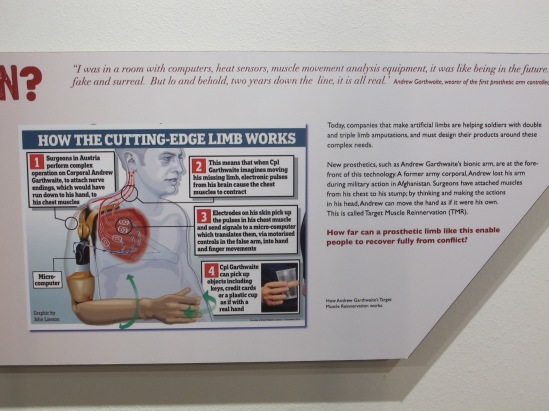Today I visited the Thackray Museum in Leeds. I was welcomed by Alan who is the archivist there. Alan has worked there since before it was a museum, cataloging all the artifacts. The Museum has it’s home in part of the old Workhouse, which also has a resonance with my research.
Alan was prepared for my visit as we had a brief telephone conversation last week to arrange my seeing him. Alan’s knowledge of historical medical artifacts is encyclopedic, and for an hour and a half he talked to me about the history of prosthetics and amputation surgery. He helped me piece together some of the information I had about James Kinnear and his work. Alan found My Great-grandfather in his records of artificial limb makers and was interested in my stories of James. I was shown some of the catalogues he had in his possession which had illustrations and explanations of the various appliances from the period my Great- grand Father was working in that field. I was also shown the various crafts that went into producing a limb. Alan had photographs of people working in their workshops who included, metal workers, wood workers, leather workers, engineers and more depending on the prosthetic and its needed components. Most of the design was unchanged from the 1700’s to the early 20th Century. Only as materials became available and processes developed do you see the many changes over the past 50 years in production and functions of the limbs. Hooks replacing digits for hands were used until the 1970’s and robotics began to increase the functions and abilities of a five digit usable appliance which worked on reactions from the nerves in the remaining arm or leg. I was also shown small cases that held a variety of tools that could be interchanged within the wrist mechanism in the 20th century prosthetic arms. Anything from brushes to hammers, pliers and gripping aids were available.
There was also an exhibition in the main galleries relating to the first world war and how casualties would be rehabilitated and in comparison the casualties of recent conflicts. There were 2 videos on a loop showing film taken at Roehampton where the main rehabilitation services were for soldiers who were war casualties in and after WWI, and also 2 young soldiers who had been injured in Afghanistan, losing limbs and how prosthetics had been fitted and worked for them. The display cabinets also showed examples from the early 1900’s and present day prosthetics with life-like hands along side the more futuristic looking prosthetic blades which are available. I was allowed to take lots of photographs from the exhibition and use them on my blog with Alan’s permission on behalf of the museum. The virtual tour with the images I took is below. Some of the camera angles are not ideal as I had to work with the lighting in the museum reflecting on the display cases.
Whilst the visit was incredibly interesting and informative I am not sure how this will inform the next stage of my work which will see me developing my initial research?




